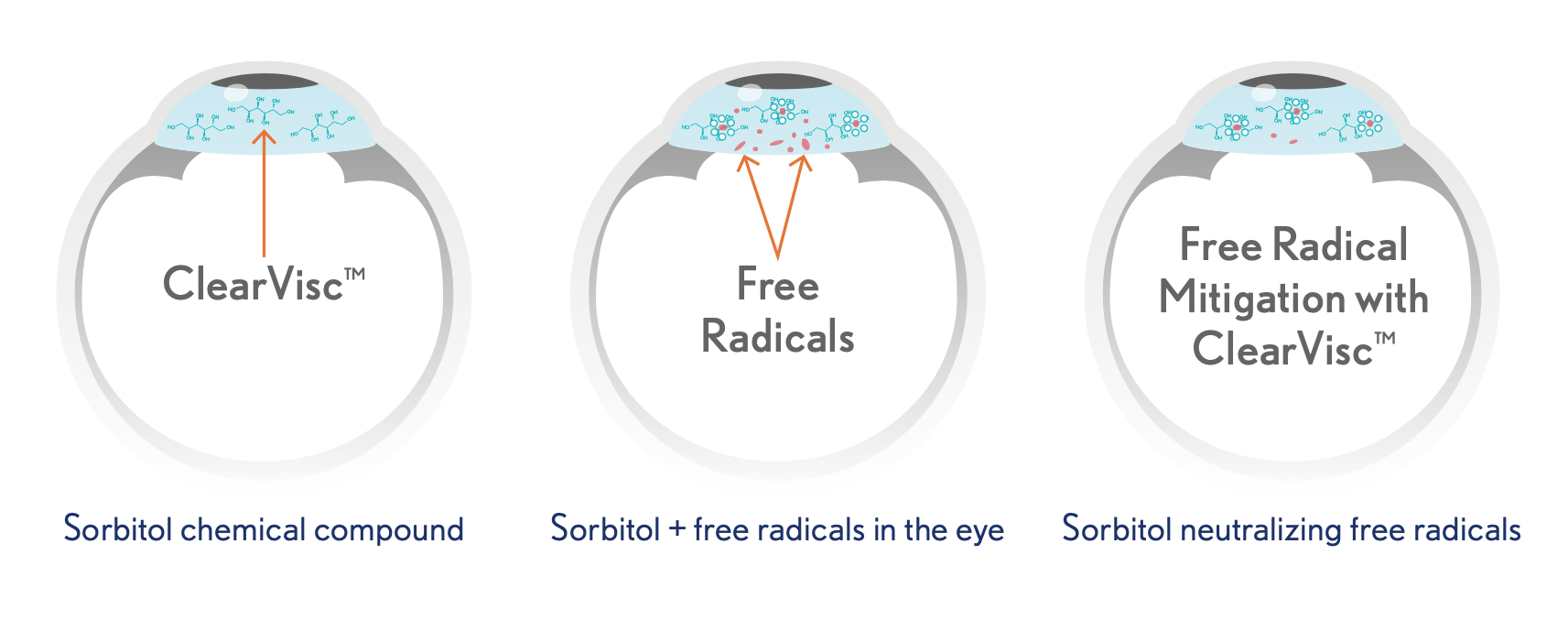A Viscoelastic with Clear Benefits
ClearVisc™ 2.5% sodium hyaluronate
Dr. Inder Paul Singh is a private-practice ophthalmologist in Wisconsin with a passion for the latest technology. He has used ClearVisc in many of his surgical cases and is enthusiastic about the practical benefits of this dual-action viscoelastic.
The Practical Benefits Are Clear
ClearVisc is available in syringes that contain 1 mL of dispersive viscoelastic. This is an ample volume to provide sufficient OVD for the entire cataract surgery procedure. For Dr. Singh, “The big benefit of ClearVisc is the 1 mL syringe. This allows more volume than similar viscoelastics.”
The large volume 1 mL syringe that ClearVisc is supplied in can be used to fill the bag and insert the lens and reduces the chance that a second syringe will be needed, potentially providing some cost savings. 95.1% of surgeons in the clinical study did not need a second syringe of OVD.3 Additionally, for surgeons who typically use a dispersive and a cohesive viscoelastic, the extra volume of ClearVisc may allow the use of just one product as needed during the procedure. For the more complicated cases, having this extra volume can come in handy. From a practical standpoint, the extra viscoelastic volume makes a big difference to Dr. Singh.
Other practical benefits of ClearVisc are the chamber stability it provides, the lack of bubbles when ClearVisc is injected, the clear medium without a yellow tint, and the viscosity, which keeps the viscoelastic in the eye but is also easy to remove at the end of the case.3

Free Radicals Form during Phaco Cataract Procedures
Free radicals can be created during phacoemulsification. Phaco energy or manipulation of the eye during the cataract procedure can contribute to development of free radicals. The resulting free radicals have the potential for causing corneal endothelial damage.1 Free radicals attack healthy cells and cause oxidative stress, which leads to cell damage.
ClearVisc Delivers Dual Action Protection
ClearVisc provides both mechanical and chemical protection during phacoemulsification cataract procedures. ClearVisc helps prevent mechanical energy from phaco ultrasound from disturbing the cornea.
Mechanical protection is due to the molecular weight and viscosity of ClearVisc, which were designed to optimize endothelial cell protection and provide a mechanical barrier.2
Chemical protection is based on the proprietary formulation, which contains both sodium hyaluronate and sorbitol to inhibit free radicals.1,3 A laboratory study showed that sorbitol delivers superior free radical protection compared to other dispersive OVDs.1,3 ClearVisc with sodium hyaluronate and sorbitol chemically bonds to free radicals to provide a high level of free radical scavenging activity.
ClearVisc is the only dispersive OVD in the United States that contains sorbitol, which has antioxidant or free radical scavenging properties that can protect tissues in the eye. The sorbitol neutralizes free radicals by donating an electron to the free radical.

ClearVisc for Proven Clarity
ClearVisc provides clarity intraoperatively and postoperatively. During cataract surgery, ClearVisc helps to ensure excellent tissue visualization by minimizing the capture of bubbles and other material during the procedure.
Clear corneas were seen in 91% of eyes on post-op day 1 and 100% of eyes at post-op week 1 when ClearVisc was used.3 Some surgeons attribute the clear corneas to the ability to fully remove the product from the anterior chamber at the end of the case, as well as providing endothelial protection.
ClearVisc offers clear benefits for use in cataract surgery.
ClearVisc benefits include:
- A 1 mL volume in the syringe – limits the need to open a second pack
- Dual action chemical and mechanical protection of the cornea
- Free radical protection with sorbitol
- Easy removal at the end of the case
- Remarkably clear corneas on postoperative day 13

Dr. Inder Paul Singh, a Wisconsin native, is in private practice and the president of The Eye Centers of Racine & Kenosha, Ltd. Dr. Singh completed his residency in ophthalmology at Cook County Hospital in Chicago and his fellowship in glaucoma at Duke University.
Financial disclosure: consultant to Bausch + Lomb
Visualize the benefits and experience the difference – schedule your ClearVisc demo today!